Spinal Stenosis services offered in St. George, UT
Spinal stenosis, or narrowing of the spinal canal and other foramina, can come from various spinal conditions, including herniated discs and bony overgrowth. At Alturas Pain and Spine Specialists in St. George, UT, pain management specialist Stacie Oliver, MD, evaluates and treats spinal stenosis using the latest strategies in spinal care. To learn more about spinal stenosis and how to treat it, call the office or book an appointment online today.
What is spinal stenosis?
Spinal stenosis is a condition that causes nerve compression in the spine. This is because the condition involves the narrowing of the canal and other passages within the spine, where nerves travel and exit the spinal cord. It’s most common in the lower back (lumbar spine) and the neck (cervical spine).
In most cases, spinal stenosis results from wear and tear within the spine, mostly from osteoarthritis. However, it can also be the result of scoliosis, spinal injuries, and other conditions impacting the bones of your spine. Some people are predisposed to spinal stenosis from birth because of their natural anatomy.
At Alturas Pain and Spine Specialists, Dr. Oliver specializes in evaluating, diagnosing, and treating spinal conditions that cause pain, often elsewhere in your body. She can look at your spine using advanced imaging tests to locate the exact place where spinal stenosis occurs.
What are the symptoms of spinal stenosis?
Spinal stenosis symptoms vary according to the location of the nerve compression. Some people with spinal stenosis do not experience symptoms, but the narrowing can be detected on a magnetic resonance imaging (MRI) or computed tomography (CT) scan.
Here are the symptoms of spinal stenosis according to the location:
Cervical spine
Spinal stenosis in the neck causes upper body pain and symptoms like numbness or tingling. They mostly occur in the shoulders, arms, and neck. However, in some cases, symptoms can affect the feet and legs.
Lumbar spine
Spinal stenosis in the lower back exclusively affects the legs, feet, and lower back. It causes symptoms like numbness, tingling, weakness, pain, and cramping.
How is spinal stenosis treated?
Managing the symptoms of spinal stenosis is possible with evidence-based care at Alturas Pain and Spine Specialists. Dr. Oliver first evaluates you and makes sure the diagnosis is precise before proceeding with treatment. She can then develop a care plan that accommodates your needs. It may include:
- Oral medications
- Physical therapy
- Corticosteroid injections
In some cases, but not all, spinal stenosis requires surgery. It’s usually a last resort after you’ve tried nonsurgical strategies with little or no improvement. Laminectomy, or decompression surgery, is the most widely used technique for treating spinal stenosis.
If you experience symptoms that may come from spinal stenosis, call Alturas Pain and Spine Specialists for a professional evaluation, or book an appointment online today.


